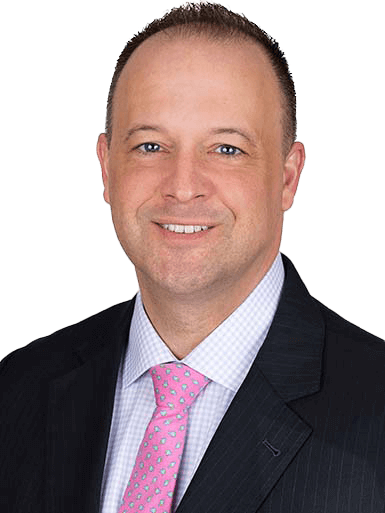How Nonprofits Overcome Barriers to Optimize Reserve Funds
During AAFCPAs’ recent Nonprofit Seminar (April 2024), Kevin P. Hodson, CMT, CAIA, AIF®, Director of Investments, Wealth Advisor and Katie Belanger, CPA, Partner briefed approximately 400 attendees on ways to optimize their reserve funds and grow returns.
The full session was recorded and may be viewed as a webcast at your convenience. >>
Despite having sophisticated investment portfolios and cash management strategies, many nonprofit organizations still struggle to optimize the potential of excess cash reserves. Excess reserves include any funds held above and beyond standard operating expenses or planned expenditures, often referred to as excess cash on hand. As tempting as it may be to hold large reserves on hand, that choice does not come without risk. Over the past four years, Nonprofits have had to deal with interest rates below the rate of inflation, as well as the possible loss of principal in their savings accounts. The year 2023 served to underscore the need to know exactly how much protection depositors have on their funds held in banking institutions, as three of the four largest bank failures in American history occurred that spring.
The reasons nonprofits should invest are not all that different from why individuals make the same decisions. It is about understanding the role of their money both today and in the future. You want to overcome the cost of living, which, as we know, has been rising steadily for quite a while now. For a nonprofit, you want to ensure the money you have been entrusted to oversee can still buy a reasonable amount of goods and services when the time comes to use them.
Every dollar counts toward furthering the nonprofit’s mission. By strategically investing excess reserves, nonprofits are better able to generate unrestricted revenue to support both current operations and future needs. This is particularly valuable in a landscape where philanthropic dollars and government contracts are highly competitive and unpredictable. The primary goal should be to ensure the value of your money keeps pace with inflation and rising costs.
Unlike individuals, many nonprofits maintain large cash reserves that may exceed protection limits provided by the Federal Deposit Insurance Corporation (FDIC) or the National Credit Union Administration (NCUA). This means that a significant portion of those funds could be vulnerable if the bank or credit union should fail. By strategically investing reserves, nonprofits may generate additional income to use in support of their missions and to sustain operations during uncertain times. By further diversifying their financial portfolio, the same nonprofit may also boost its security in the event of a financial institution default situation.
Common Barriers to Investing
Many of AAFCPAs’ clients hesitate when asked about their plan for cash reserves. Some hurdles we see often when working with clients include:
- Loss of Assets: Many nonprofits fear the potential loss of their assets in the market. The volatility of financial markets may be intimidating, especially for organizations with limited experience in investing.
- Timing and Cash Flow Uncertainty: Nonprofits may worry about having sufficient liquidity to meet operational needs. A significant deterrent is a concern that funds might be tied up in investments when they are needed for day-to-day expenses.
- Donor Misperceptions: There is a common misconception that donors disapprove of their contributions being invested. However, many donors are supportive of investment strategies that ensure their donations have a lasting impact.
- Lack of Expertise: Nonprofit fiduciaries may lack the internal resources and expertise necessary to manage investments effectively. This lack of knowledge may lead to hesitation and missed opportunities for financial growth.
Overcoming Fear Through Education and Communication
The Board of Directors plays a crucial role in the governance and oversight of nonprofit organizations, especially when it comes to developing a cash management strategy and plan. Clearly, the board’s buy-in is paramount. They are generally deeply involved in the decision-making process. Board members may come with their own aversions to risk along with their own backgrounds and concerns about investing the nonprofit’s funds.
Addressing those fears and getting everyone on the same page requires a concerted effort to educate nonprofit leaders and stakeholders about the benefits and risks of investing. Clear communication about how investing could safeguard the organization’s financial future is crucial when explaining how diversified investment strategies can mitigate risk and demonstrate the potential for stable, long-term returns. Engaging an expert advisor can help educate the board and address their concerns, facilitating informed decision making.
A well-informed board can effectively oversee the organization’s investment strategy and ensure it aligns with the nonprofit’s goals and mission. Bringing in financial experts to provide training and insights can help bridge knowledge gaps and build confidence in the investment process.
Creating an Investment Policy Statement (IPS)
From an audit perspective, when reviewing investments as part of the financial statement audit, AAFCPAs examines the investment policy statement (IPS). We not only audit the investment allocation according to the IPS but also look at internal controls and monitoring procedures. The IPS is much more than a formality; it’s a critical foundation for forming a cash management strategy.
Your IPS should include:
- Purpose and Origin of Funds: Clearly state the purpose of funds and their source. This helps contextualize the investment strategy within the nonprofit’s mission and financial goals.
- Roles and Responsibilities: Define the roles of those managing the investments, both internally and externally. This includes outlining the duties of the investment manager, board members, and any external advisors.
- Permissible Investments: Identify which investments are allowed and which are restricted. This ensures the investment strategy aligns with the organization’s values and risk tolerance.
- Spending Limits: Set limits on how much can be spent from investment funds. This helps to maintain the integrity of reserves and ensures funds are available for future needs.
- Portfolio Management: Outline guidelines for monitoring performance and making necessary adjustments. Regular reviews of the investment portfolio help to ensure it remains aligned with the nonprofit’s goals and market conditions.
Selecting the Right Investment Manager
Selecting an experienced investment manager is critical. The manager will oversee your portfolio, ensuring it aligns with regulatory requirements and your organization’s goals. Regular reviews with the board or designated representatives are necessary to maintain alignment with your objectives and the changing economic landscape.
An experienced investment manager can provide valuable insights into market trends and help develop a strategy that balances risk and reward. They can also assist in navigating regulatory requirements and ensuring your investment strategy complies with all applicable laws and guidelines.
Building a Strong Investment Infrastructure
The advisor you choose will be the quarterback for the overall process. But overall administration may involve multiple parties. Keep in mind that establishing a robust investment infrastructure involves more than just selecting an investment manager. It requires the creation of a framework for ongoing oversight and governance. This means developing clear reporting mechanisms and ensuring all stakeholders are kept informed about the performance of the investment portfolio.
Regular communication between the investment manager and the board is essential. This builds trust and ensures your investment strategy remains aligned with the organization’s mission and objectives. Periodic training sessions for board members may also help in keeping them informed about changes in the market and the potential impact on the organization’s investments.
By overcoming these barriers and strategically managing reserve funds, nonprofits can enhance their financial stability and better support their mission. Investing wisely not only helps in safeguarding the organization’s future but also ensures that it can continue to make a positive impact within the communities served.
AAFCPAs and AAF Wealth Management advise that clients review their cash management strategy to see if there are ways to further boost revenue and make cash balances work harder. Start the conversation internally and with your board to see what issues arise. What blockers or hurdles are you facing as an organization? Then talk with your AAFCPAs’ partner about your challenges to see what solutions we can build together.
If you have questions, please contact Kevin P. Hodson, CMT, CAIA, AIF®, Wealth Advisor at 774.512.4173 or khodson@nullaafwealth.com, Katie Belanger, CPA, Partner at 774.512.4033 or kbelanger@nullaafcpa.com—or your AAFCPAs Partner.


